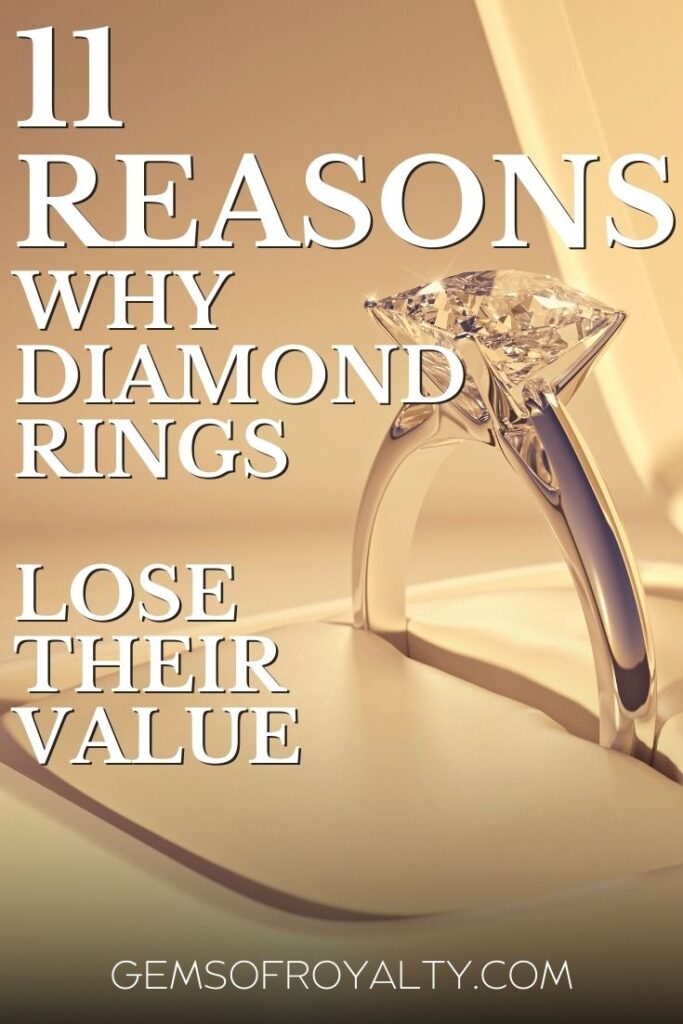When you no longer need your diamond ring, the thought that crosses your mind is to sell it to recover its hefty purchase amount. But when you put the diamond ring up for sale, you realize its market value is almost half the initial price. So why do diamond rings lose their value?
Diamond rings lose value because you buy them at a markup price. When you buy a diamond ring, you’re not just paying for the cost of the diamond but also the store’s overhead, the salary of the salesperson, and other associated costs. When reselling, you account for the diamond’s value only.
In this article, I’ll break down for you the 11 reasons diamond rings may lose their value. Let’s get started.
1. Due to Retail Markup
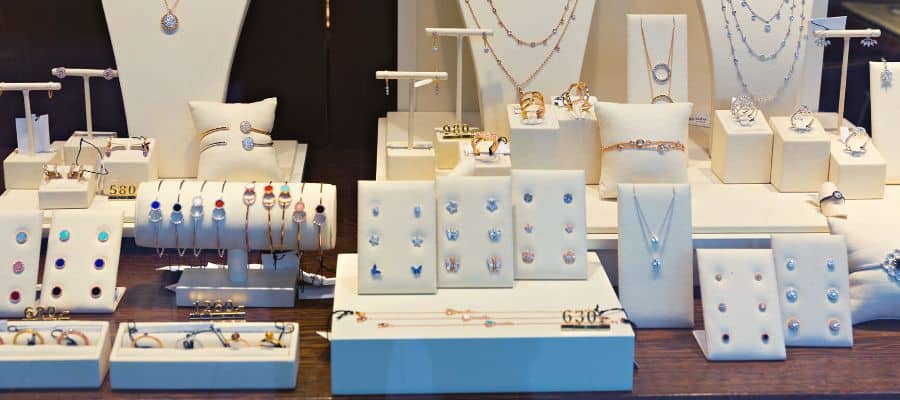
A diamond ring’s value is always constant in a retail shop. However, the moment you purchase it and walk out, the value drastically decreases by almost 40 to 50%. The reason is that when you buy from a retail store, you pay for the diamond and the store’s overheads.
To understand better how diamond rings worth changes, let’s look at their supply chain values, which include:
- Purchase value
- Appraisal value
- Resale value
Purchase Value
Retailers buy diamond rings from wholesalers who purchase directly from manufacturers. Like other traders, the motive of diamond ring dealers is always to make a profit. So, each charges an extra price on top of the market value.
Diamond ring retailers always sell to the final consumer. Their selling price includes a markup that can reach 100% or 200% of the diamond ring’s market value. They do so to cover utility bills, wages, and rent space, meaning you can buy a diamond ring for almost double its worth.
Appraisal Value
When you want to dispose of your diamond ring, you’ll need an appraisal document explaining its features. It looks into the diamond’s cut, clarity, color, and carat.
When you get your diamond ring appraised, the value will always be lower than what you initially paid. The reason is appraisers need to factor in the resale value of the diamond. So, they will deduct the cost of cutting, polishing, and other factors from the total worth.
Resale Value
The resale value is the amount an ex-owner receives after selling the ring. Usually, the buyer will pay less than the purchase value.
You’ll get back what you paid for it minus depreciation and retail markup, which can be as high as 25% to 50%. So, if you paid $5,000 for your diamond ring, you could only fetch $2,500 when you resell it.
2. Lack of Diamond Grading Certificate

A diamond certificate or grading report refers to a document issued by a gemologist in a Diamond Grading Laboratory such as the Gemological Institute of America (GIA).
The report describes the 4Cs of a diamond— clarity, color, carat, and cut and a plot diagram of the inclusions in the diamond. Additional grading characteristics include symmetry, fluorescence, and polish.
A valid certificate should also include the following:
- The date the diamond was graded
- Grading report number
- Cutting style and shape
If you do not have a diamond grading certificate from a reputable laboratory, your diamond ring’s value will reduce significantly.
A certificate proves that your diamond has been independently assessed and graded for its quality. With a certificate, it will be easier to prove the quality and source of your diamond ring to potential buyers.
3. Incorrect Metal Choice for the Setting
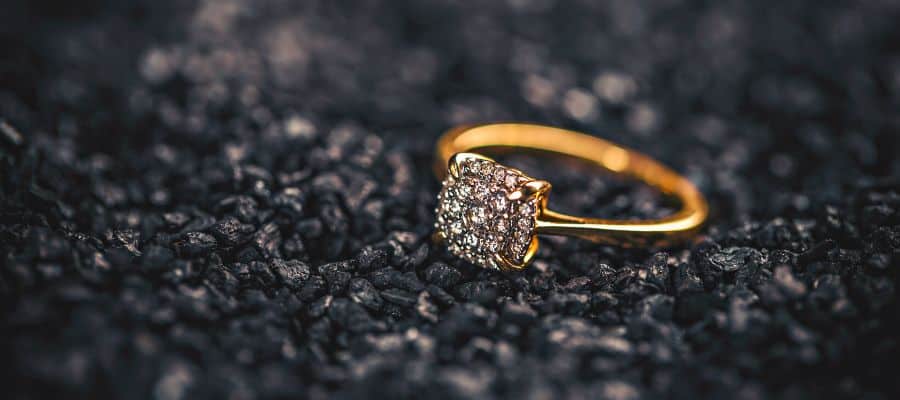
Choosing a diamond ring’s setting is as important as selecting the diamond. The metal setting can affect the sparkle of your stone, style, durability, and price. There should be harmony between the setting and the stone.
For example, if you have a yellow diamond with a yellow gold setting, the value of your ring will be significantly less than if you had chosen a white gold or platinum setting. This is because yellow gold is not as popular as it once was, and as such, it is not as valuable.
Conversely, white gold and platinum are much more popular and, therefore, much more valuable.
4. Daily Wear and Tear

One outstanding quality of a diamond is durability. However, wearing your ring daily exposes it to substances and surfaces that can lower its quality. Your skin also produces oils that can form a film on the diamond over time, making it appear dull.
Washing your diamond with harsh chemicals such as chlorine, acetone, or abrasives like baking soda can affect its clarity and color, which largely contribute to the value of the diamond.
Gems can become loose over time and fall out of their settings. Failing to get your ring checked regularly by a skilled jeweler to tighten any loose stones and clean it depreciates its market value.
Also, wearing your ring all the time can cause the metal prongs that hold the diamond in place to wear out. When this happens, the diamond is at risk of falling out. Buyers would be willing to pay less for such a ring because they’ll need to repair it before reselling.
But you can prevent your diamond ring from wearing off by:
- Getting it checked by a jeweler regularly: A jeweler has the necessary equipment to assess and repair your diamond ring in case of any potential problem. They also have suitable cleaning materials that won’t harm your ring.
- Removing it in extreme weather conditions: Very hot or cold temperatures can cause the stone to warp or crack.
- Storing it in a pouch or box: When engaging in physical activities such as swimming or gardening, you should keep your ring in a purse to protect it from warping or scratching.
5. Diamond Rings Are Not an Investment
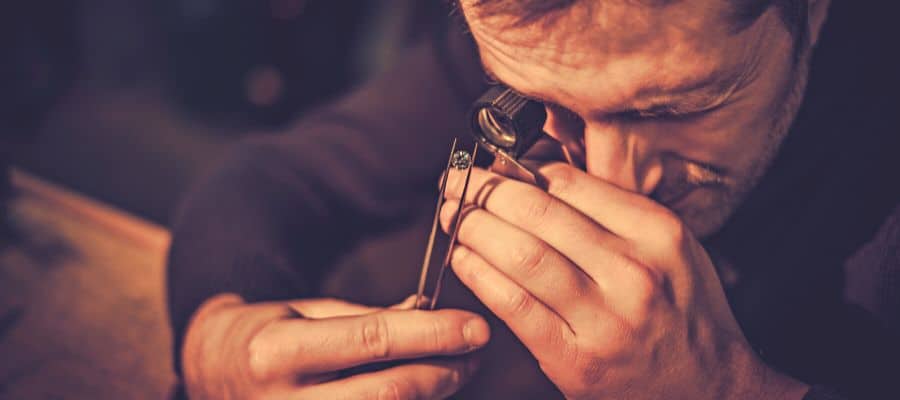
An investment is an asset that appreciates over time to give you returns in the form of income or capital gains. Meaning it can be a store of wealth.
Many people think of diamond rings as an investment, but they aren’t. Diamonds have no set value, unlike stocks and bonds, which you can trade for cash. You can only sell your ring for what the buyer wants to pay for it at that time, which may be less than you paid or even a fraction of its original value.
Like cars or most other commodities, diamond rings are depreciating assets. You lose a significant portion of its value when you buy it. It is not similar to gold or silver, which have a fungible and liquid market, and you can sell them at any time at an appreciated value.
6. Diamonds Don’t Have an Intrinsic Value
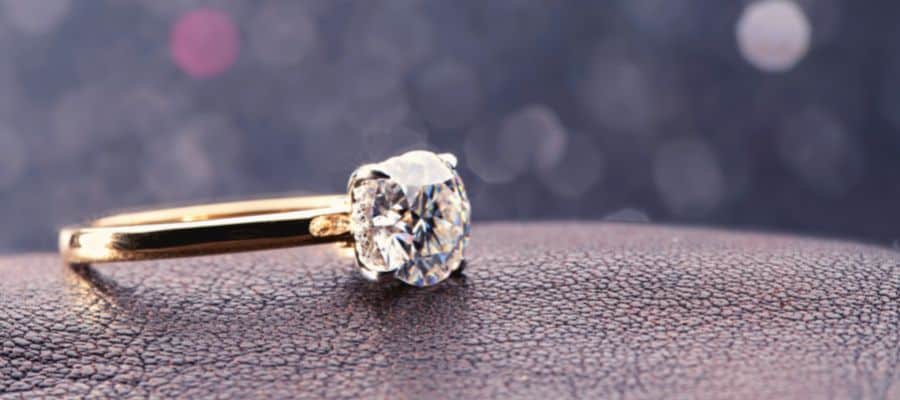
In finance and economics, the intrinsic value of an asset refers to its current value plus the discounted future cash flows it will generate.
For instance, if you buy a truck, the intrinsic value will be the resale value added to the cash flows you have generated from renting it. This will count as an investment. But if you fail to rent the truck, its value will equal the resale value because it is a depreciating asset.
Likewise, a diamond ring is a depreciating asset and would only appreciate if it were an investment. Also, there’s no way of hedging it against inflation because its market is illiquid and not fungible. So, the second you take possession of the diamond ring, it loses value.
7. Because Diamond Dealers Engineered the Market that Way
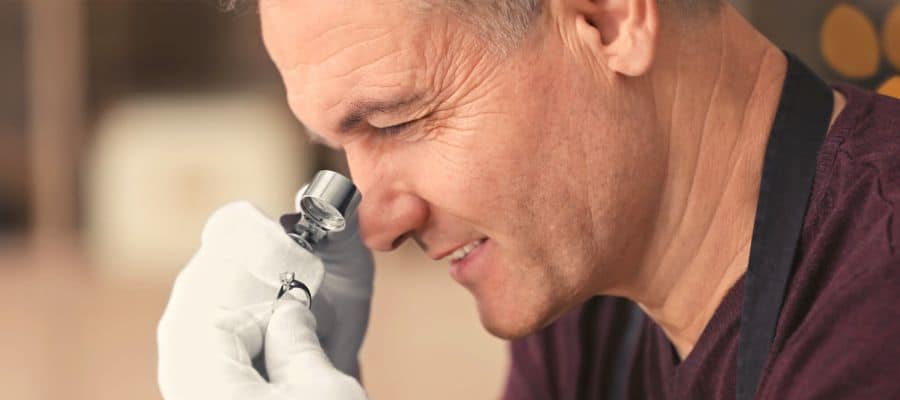
When diamonds became popular in 1947, a woman in the De Beers Group coined the slogan diamonds are forever. This was the beginning of an advertising campaign that lasted over half a century and convinced people that they should give diamonds on special occasions like anniversaries and engagements.
The problem is that this marketing campaign was created by diamond dealers who wanted to sell as many diamonds as possible. To do this, they needed to convince people that diamonds are rarer than they are and have more sentimental value than their monetary value.
If you keep your diamond ring and wear it proudly, it will increase in value because it will become more sentimental to you.
Anyone who needs to buy a diamond ring would only buy a new one. This decreases the market for used diamonds causing their value to fall because the supply exceeds demand. As such, this would discourage people from selling their diamonds when they need cash. This arrangement preserves the value of new diamond rings and maintains retailers’ profitability.
8. Because Diamonds Are Not Forever
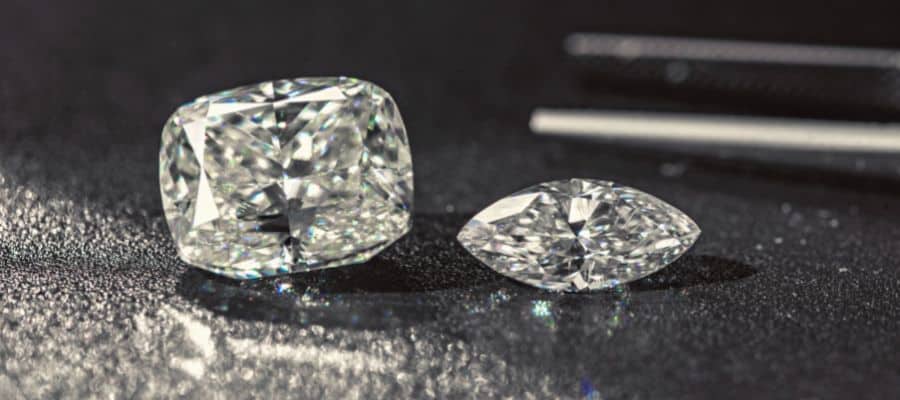
Contrary to popular belief, diamonds do not last forever. Though they are the hardest natural material on earth, they are still susceptible to depreciation. Over time, diamonds can lose their sparkle.
When this happens, the value of the diamond decreases because its physical appearance is no longer perfect. In addition, if a diamond is set in jewelry, the setting can also become damaged, affecting the diamond’s overall value.
Your diamond ring may be worth less if the following qualities are not intact:
- Color: Diamonds are either colorless or yellow. The most colorless diamonds are the most valuable. If a diamond loses its color intensity, its value diminishes, and you’ll get only a portion of its original value.
- Clarity: It refers to the purity of a diamond or the absence of flaws in the stone. A diamond with more clarity is always more valuable than one with flaws. So, if your ring fell and got a crack in the stone, its value would be low.
- Cut: A diamond’s cut is always responsible for the sparkle. Diamonds with more cuts are more valuable. If you resell a diamond ring with fewer sparkles, it will lose more value.
9. Diamonds Are Not Rare

The next reason your diamond ring might lose its value relates to rarity – or lack of diamonds. You see, diamonds are not that rare. The increase in synthetic diamonds makes them more common than in the past. Today, the supply of diamonds in the market is much higher than the demand.
If second hand diamond rings were to retain their market price value, there would be competition in the market which would cause even new diamond rings to lose value.
Sure, pure diamonds are rarer than impure ones, but the vast majority of diamonds used in jewelry are called industrial grade. And these diamonds are so common that they have very little value.
So why do we think of diamonds as being so rare and valuable? Well, that has a lot to do with clever marketing on the part of the diamond industry to keep making a profit.
10. Lack of Readily Available Market

The place you sell your diamond ring is equally important as where you buy it. And sadly, used diamond rings don’t have a readily available market.
Most well-established sellers avoid branded rings as they may affect their brand reputation. If they buy it, it will be at a throwaway price.
However, you can find a buyer if you put it up for sale online, but you’re not going to get anywhere near what you paid for it if you don’t have the diamond certificate to prove the quality.
Unless you’re selling to a friend or family member, getting anything close to what you paid for your diamond ring is hard.
11. Modern Innovation
As time goes on, jewelry companies are coming up with new ways to cut and set diamonds, which means that the value of older rings decreases.
If you have a diamond ring that has been in your family for generations, likely, it’s worth less than it once was because technology has improved. And, if you ever want to sell your ring, it’s going to take a lot of work to find a buyer willing to pay top dollar for something that’s considered outdated.
Take the halo ring, for example. This style was all the rage a few years ago, but now it’s been replaced by more minimalist designs. It’s still a beautiful piece of jewelry. But if you’re looking to sell it, you might get less money than you would for a more modern design.
If you found this article useful, make sure you save this pin below to your Jewelry board.
